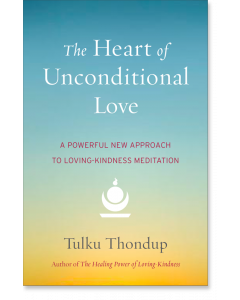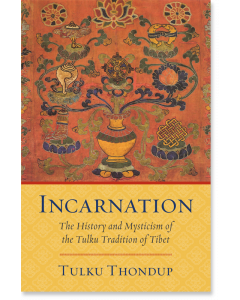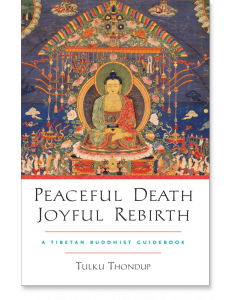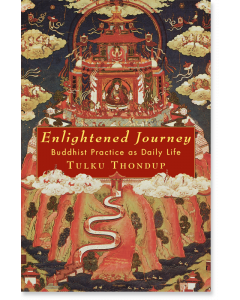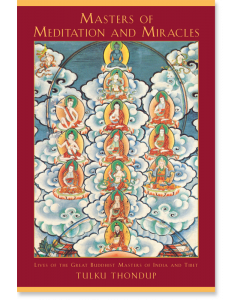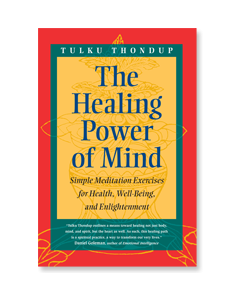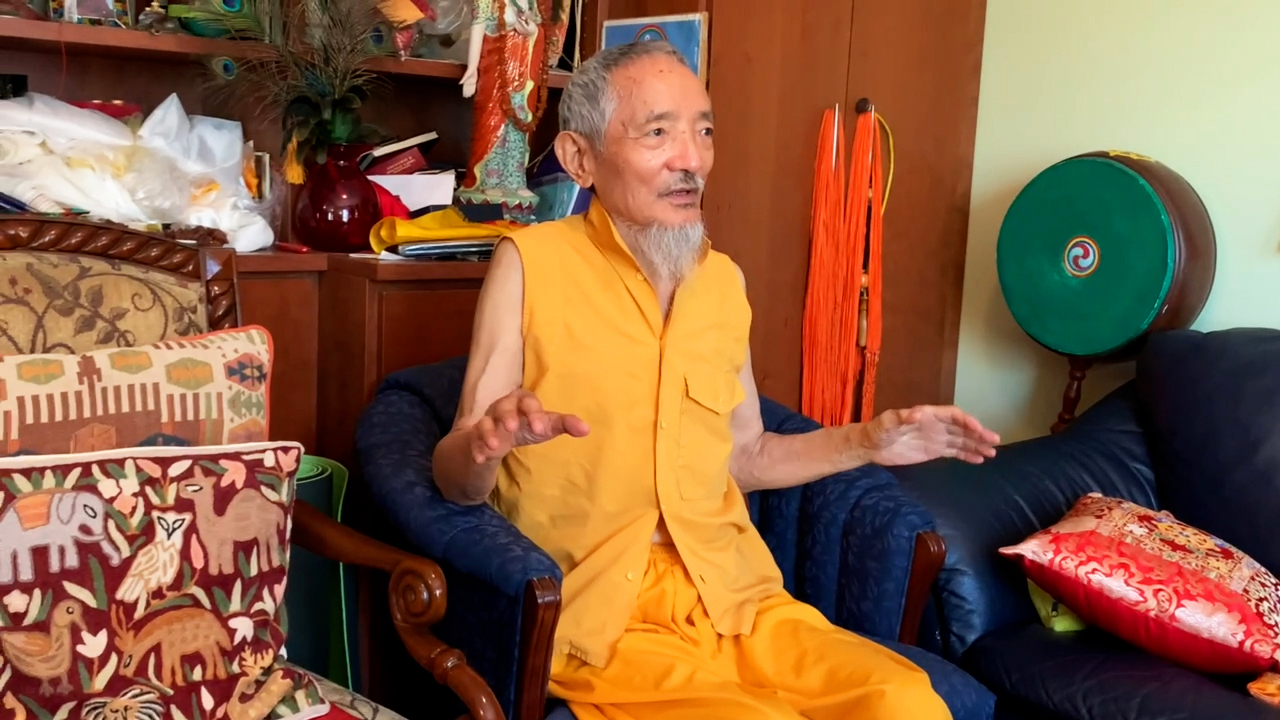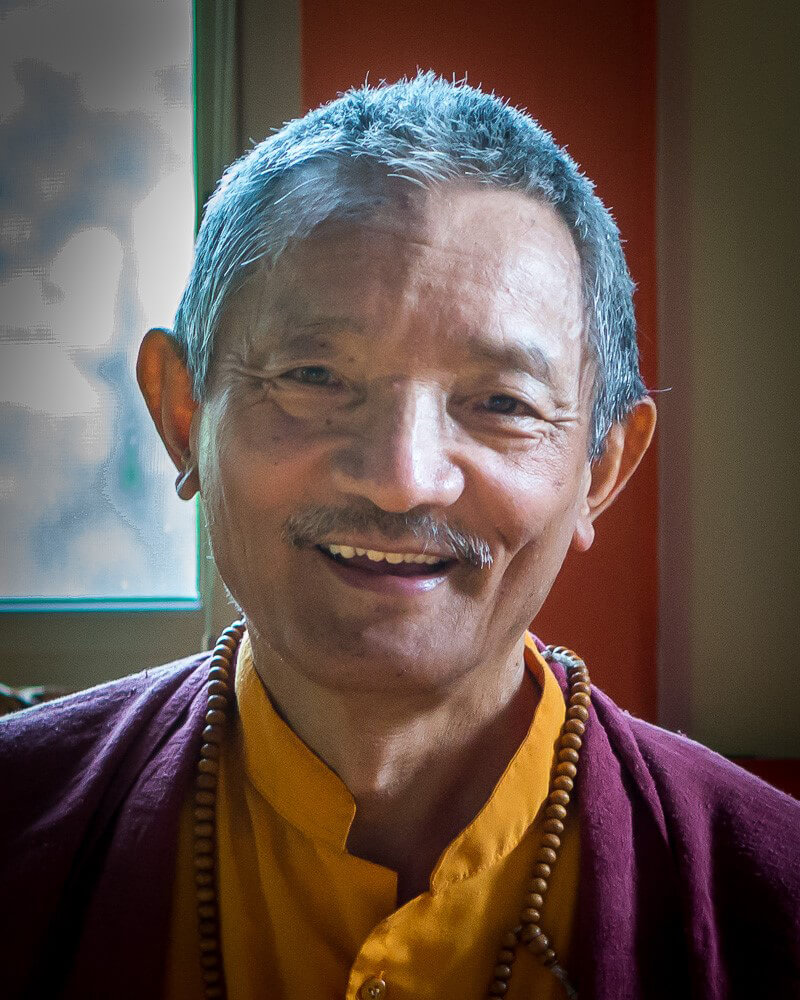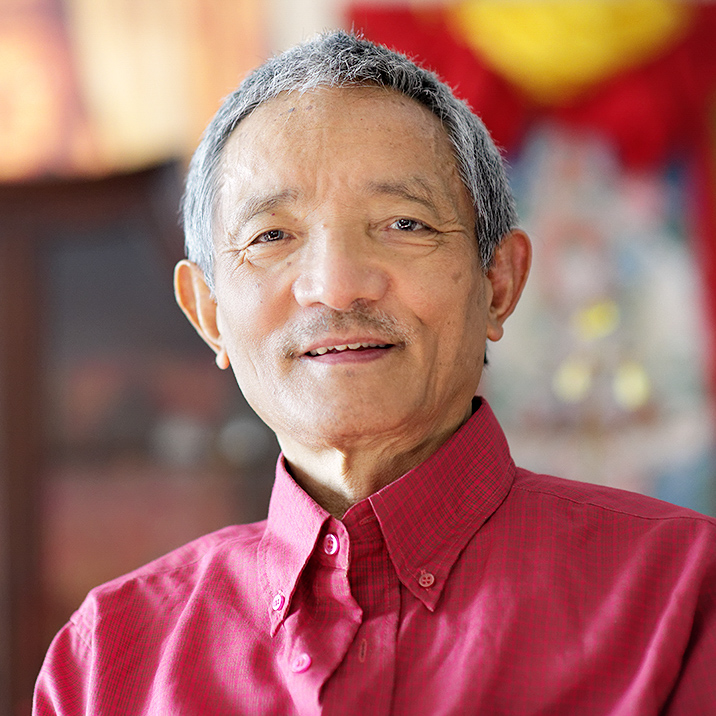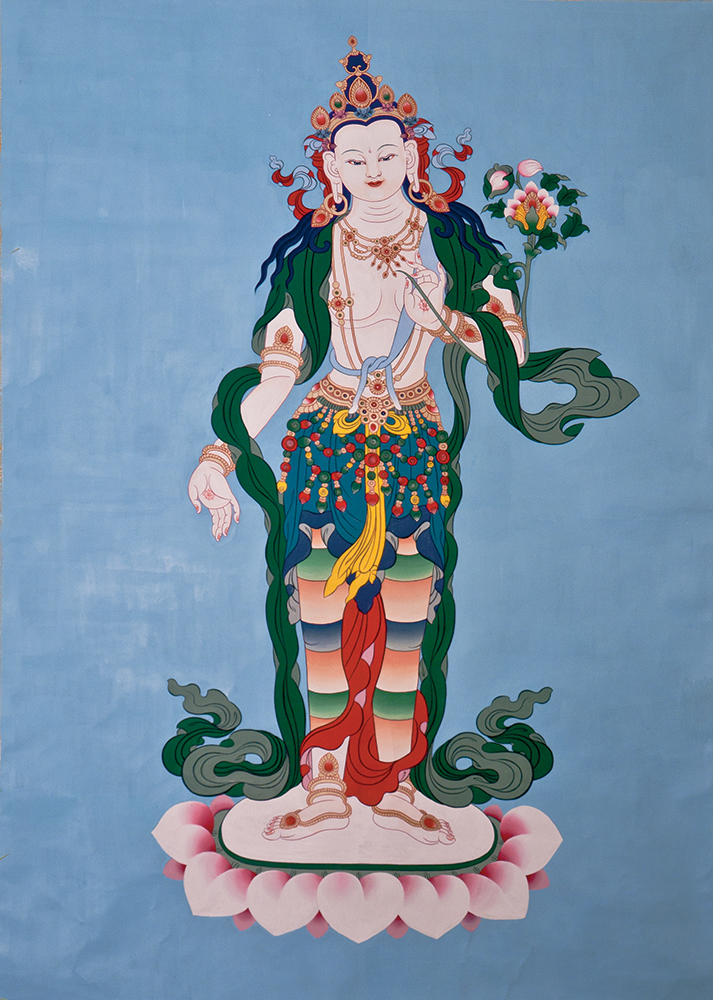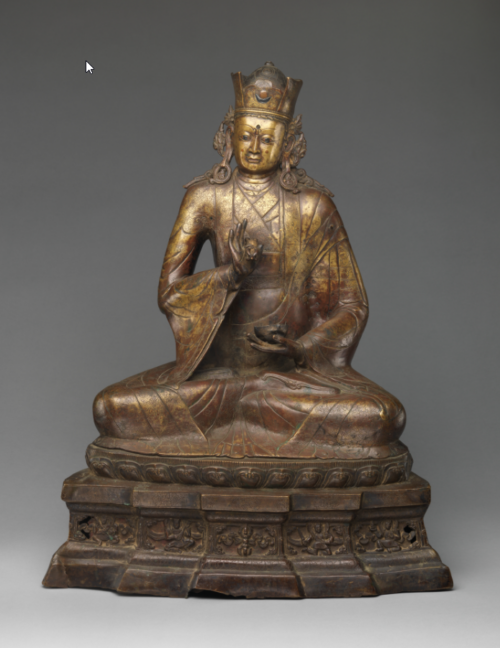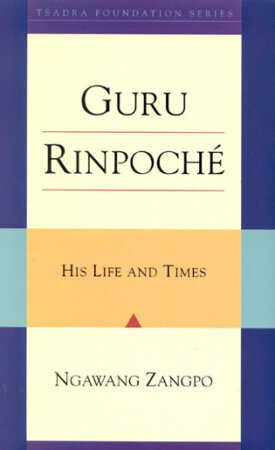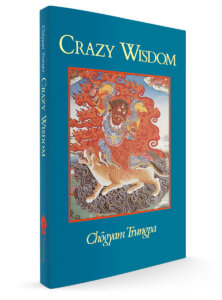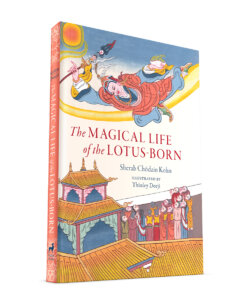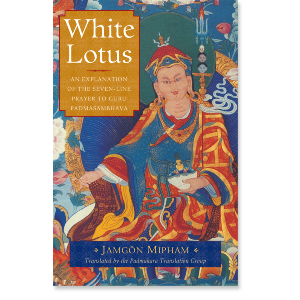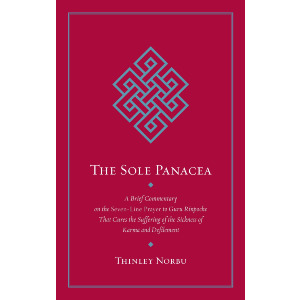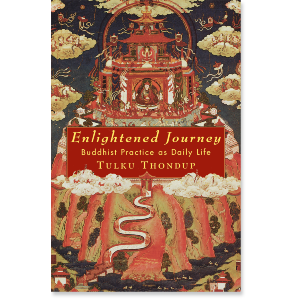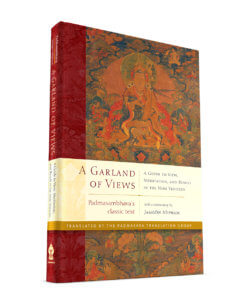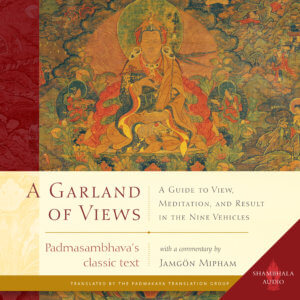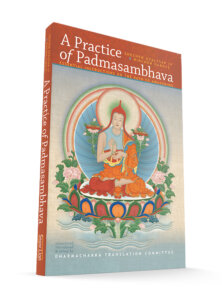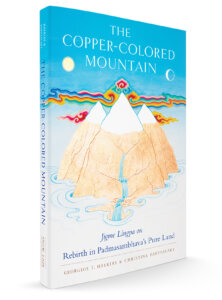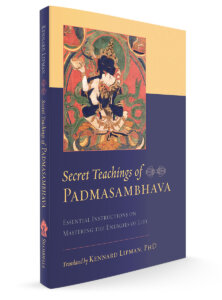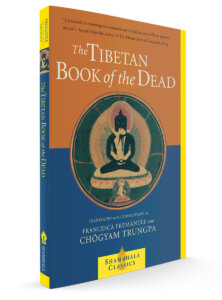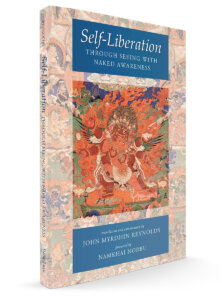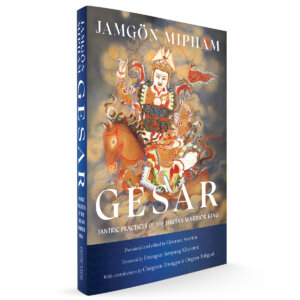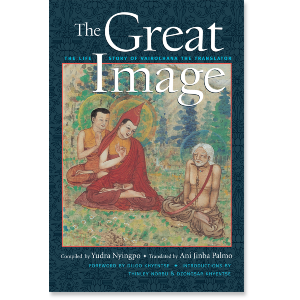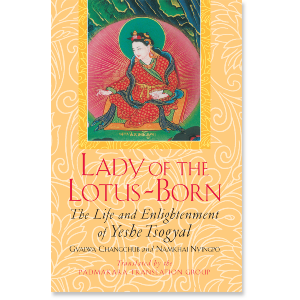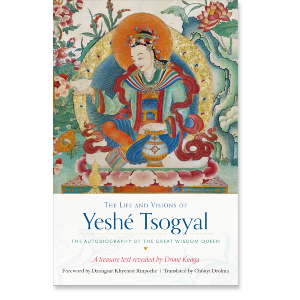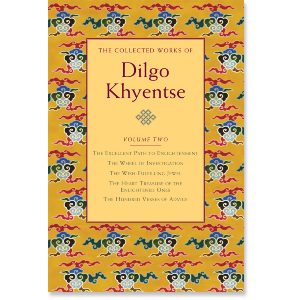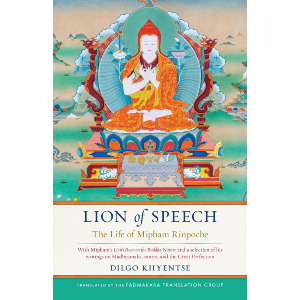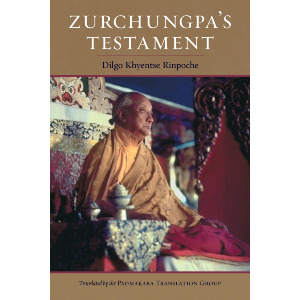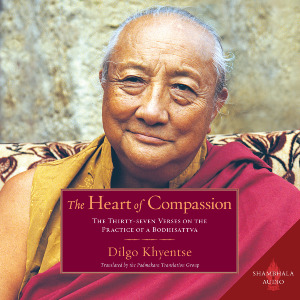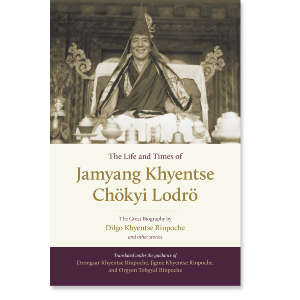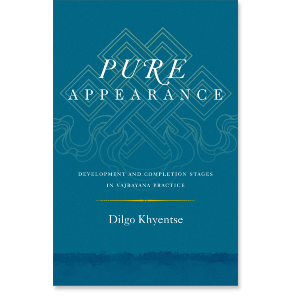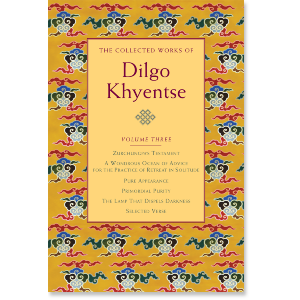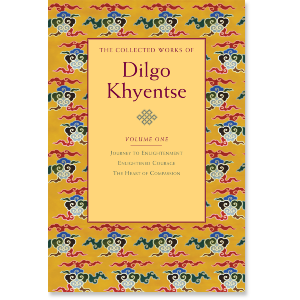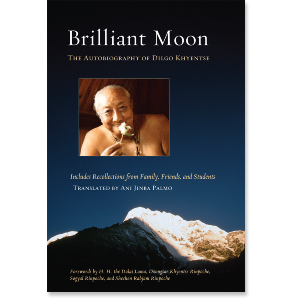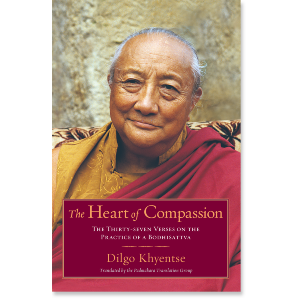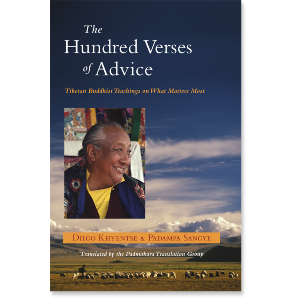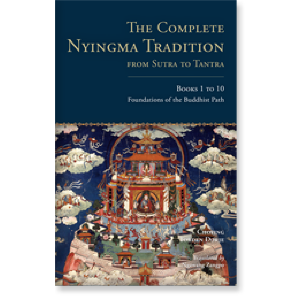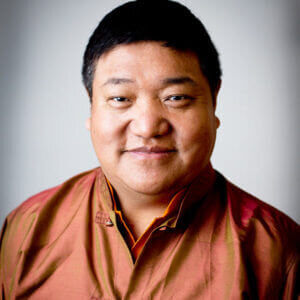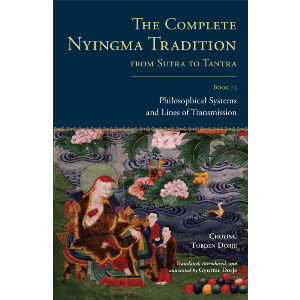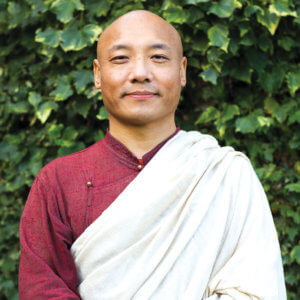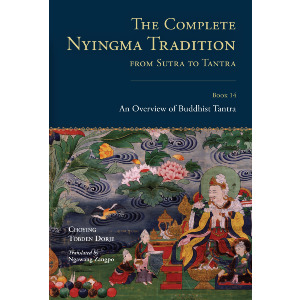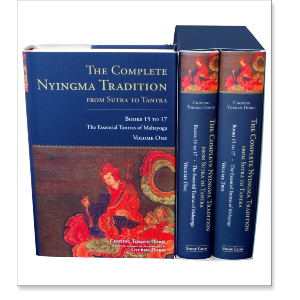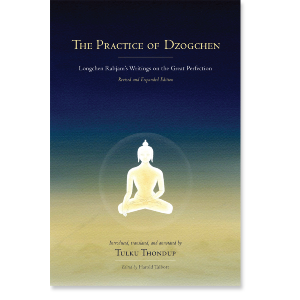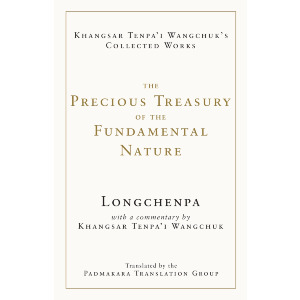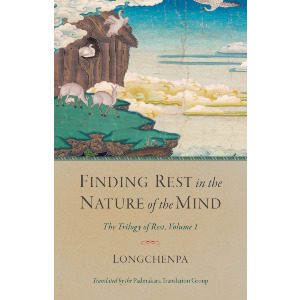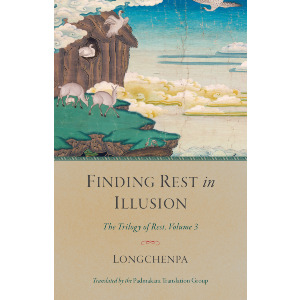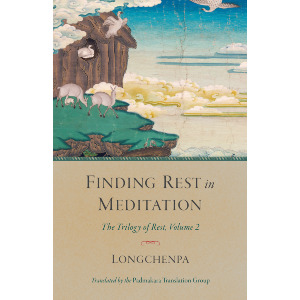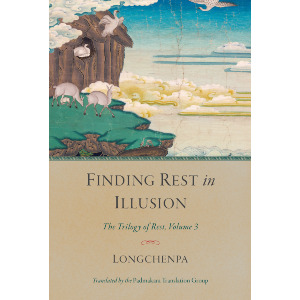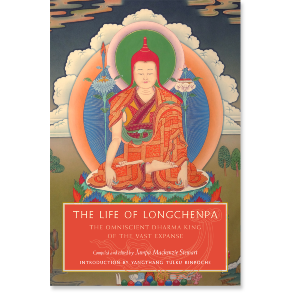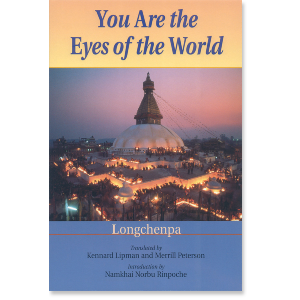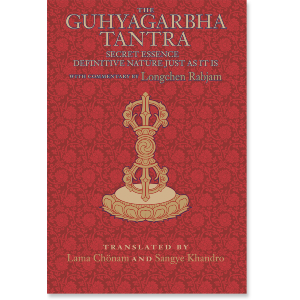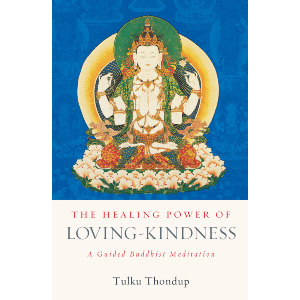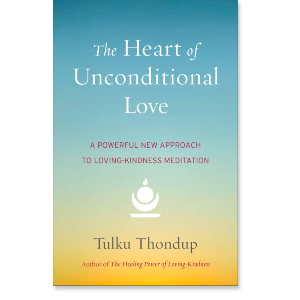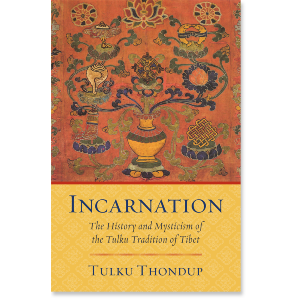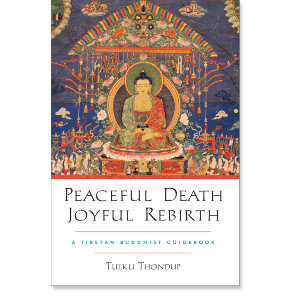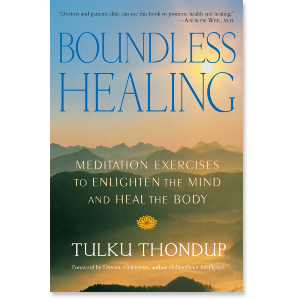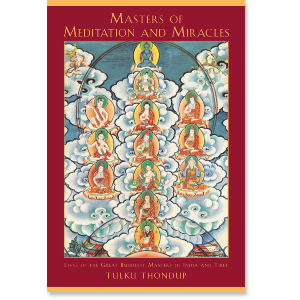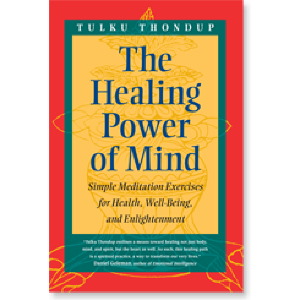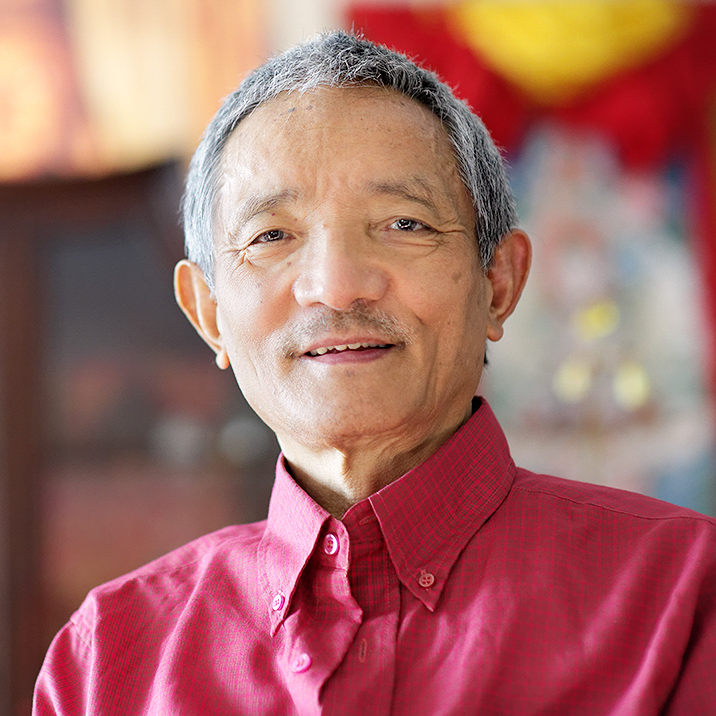

Tulku Thondup
Tulku Thondup Rinpoche was born in East Tibet and was recognized to be a tulku at age five. He studied at Tibet’s famed Dodrupchen Monastery, settling in India in 1958 and teaching for many years in its universities. He came to the United States in 1980 as a visiting scholar at Harvard University. For the past three decades he has lived in Cambridge, Massachusetts, where he writes, translates, and teaches under the auspices of the Buddhayana Foundation. His numerous books include The Healing Power of Mind, which has now been published in eighteen languages, and Boundless Healing, which has been published in eleven languages.
Tulku Thondup
-
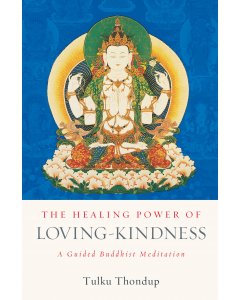 The Healing Power of Loving-KindnessSpecial Price $8.48 Regular Price $16.95- Paperback
The Healing Power of Loving-KindnessSpecial Price $8.48 Regular Price $16.95- Paperback -
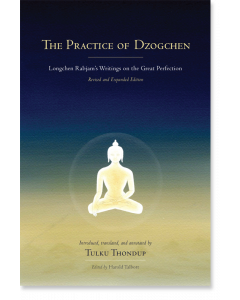 The Practice of Dzogchen$44.95- Hardcover
The Practice of Dzogchen$44.95- HardcoverBy Longchenpa
Translated by Tulku Thondup
Edited by Harold Talbott
- Bestsellers Tibetan 1 item
- Buddhist Biography/Memoir 1 item
- Buddhist History 1 item
- Buddhist Overviews 1 item
- Buddhist Philosophy 1 item
- Four Immeasurables 1 item
- Healing in Buddhism 1 item
- Introductions to Buddhism 3item
- Bardo Teachings 1 item
- Bodhisattva Path 1 item
- Dalai Lamas 1 item
- Death & Dying 1 item
- Dzogchen 2item
- Madhyamaka 1 item
- Dudjom Tersar 2item
- Longchen Nyingtik 2item
- Nyingma Tradition 4item
- Phowa 1 item
- Seven Line Prayer 2item
- Terma / Treasure Texts 1 item
- Tulku Tradition 2item
- Pure Land 1 item
- Pain & Illness 1 item
- Biography 1 item
GUIDES
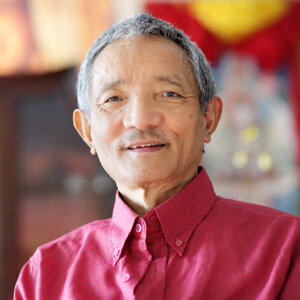
Remembering Tulku Thondup Rinpoche
It is with the most profound sadness that we share that Tulku Thondup Rinpoche, one of the great lamas of our time, passed away on December 29th, 2023. This is also the anniversary of Kyabje Dudjom Rinpoche with whom he had a profound connection.
We are bereft. Tulku Rinpoche was one of the last of great masters of his generation, and his deep wisdom, humility, humor, and ever-present kindness were a constant source of respite in world filled with so much suffering.
The Mahasiddha center in Massachusetts which Tulku Thondup was very close with wrote that Rinpoche's faithful and perfect companion Lydia said that Tulku did not want prayers for his rebirth. She said people should say whatever prayers with love and devotion, but especially can say prayers for rebirth in Dewachen.
We will update this page with any guidance on appropriate prayers and practices, but Alak Zenkar Rinpoche said that Guru Yoga should be emphasized.
For many of us, he was the Buddha of Cambridge, a hidden but fully realized yogi, always stepping out of the spotlight and pointing to others, in particular his teacher Dodrubchen Rinpoche. He was very much a lama’s lama, and few passing through anywhere near New England would miss an oppportunity to pay a visit and receive the wisdom of one of the great scholars and masters of our day.
Tulku who was in many ways a guide to many of us here at Shambhala Publications. I would often go to him to ask his advice on the suitability of certain projects and he lovingly would suggest a path.
We have a guide to Tulku’s works which you can visit here.
All of his works are absolutely invaluable, but two of the ones dearest to him were Masters of Meditation and Miracles and The Heart of Unconditional Love: A Powerful New Approach to Loving-Kindness Meditation.
The first is a highly engaging set of biographies of thirty-five realized teachers whose lives were full of peace, enlightenment, and amazing miracles. They flourished in Tibet, the Roof of the World, in its golden days. These teachers belong to the Longchen Nyingthig lineage of the Nyingma school of Tibetan Buddhism, a cycle of mystical teachings revealed by the great scholar and adept Jigme Lingpa.
The second, his most recent, he told us was very dear to his heart. In the preface, he wrote:
In this book, we try from the very beginning to generate unconditional love in ourselves by feeling the Buddha’s unconditional love through devotion and to serve others with that love. We try to see the whole world as a world of unconditional love and to perfect the ultimate unconditional love that is free from concepts. I have not explicitly written about this anywhere else, nor seen it in other books. This is the first time I have talked about transforming oneself and the world through this meditation. Yet, at the same time, this presentation extracts the very heart essence of Buddhism’s ageless wisdom teachings.
Tulku Thondup Offers An Explanation and Guided Meditation on Loving Kindness
When Dodrubchen Rinpoche passed away just under two years ago, Tulku Thondup sent out the following advice. We are including it here as we think the same advice very much applies here:
Today we are all feeling the same emotions, the same ups and downs.
However, we were taught by Kyabje Rinpoche himself. He taught Guru Yoga as our main meditation. So today especially is the time and situation when we must focus most on Guru Yoga, meditating on UNITING OUR minds with the wisdom mind of Guru Rinpoche as Kyabje Rinpoche's mind is inseperable and has become inseparable from Guru Rinpoche. Rest in that trust, that feeling. Awaken it again and again and rest in that state again and again.
Kyabje Rinpoche has been with us all these years in the form of Nirmana-kaya. But now his Nirmana-kaya form has merged into Sambhogakaya, his inner pure Buddha presence, and then into his innermost Dharmayaka Buddha-nature.
The Third Dodrupchen Rinpoche wrote a prayer to himself explaining the principle of manifesting through the three Kayas successively:
"From the Basis of the Ultimate Sphere of Dharmkaya,
Various displays of Sambhogakaya appear in all ten directions.
And then ceaseless Nirmanakayas serve beings:
To Jig-me Tenpe Gyaltshen (Nyima) I pray."So if we, with the force of devotion, could pray and unite our mind with Guru Rinpoche's wisdom mind as we have been taught to do in Guru Yoga, -- then because of (a) the power of our minds' devotion and (b) the blessing power of Guru Rinpoche and Kyabje Rinpoche, we will receive true blessings and WILL MEET Kyabje Rinpoche's enlightened presence there.
So in brief, please focus on doing Guru Yoga and try to rest in the nature of the mind where you meet Kyabje Rinpoche.
Tulku Thondup's Opening Verses to The Heart of Unconditional Love
O Buddha of Unconditional Love,
Your all-knowing wisdom eyes see all;
Your boundless power protects every being
As a mother protects her only child with unconditional love.For he who sees the compassionate eyes of the Buddha of Loving-Kindness,
His own heart wakes up with the force of boundless devotion in the Buddha;
His own face blossoms with unconditional love for every mother-being.
I, a mere distant spectator, am imbued with awe-inspiring wonder.Devotion to the Outer Buddha opens our heart as the heart of loving-kindness,
Transforming it into unconditional love for all, the Inner Buddha,
Awakening every image, sound, and feeling as the Universal Buddha, and
Uniting all as loving-kindness free from concepts, the Ultimate Buddha.Sage of Great Accomplishments—true image of loving-kindness—
Knowledge-holders, Seekers of Enlightenment, and Angels of Wisdom
I beseech you all from my heart-core with undying trust.
Please grant us your blessings to unite us indivisibly with you.Infinite beings are caught in the wheel of endless cyclic existence,
Trapped in the eye of conceptual and emotional hurricanes,
Plunged in the midst of the turbulent waves of conflicting sensations,
Whirring around the world like bees—with no end to this nightmare in sight.I have been wandering in many unknown lands for nearly sixty years.
But by the ever-present kindness of the Sage of Great Accomplishments,
And by the reminiscences of the Blazing Glorious Seat of Accomplishments,
I haven’t drifted too far from the light of the Dharma.However great the sweetness of samsara is,
It cannot be compared with the joy of Dharma, by even a sixteenth.
However vehement the flame of evil deeds and the pain of samsara are,
There is none that the rain of Dharma cannot quench!The brilliance of the sun-like Buddha’s love illuminates the sky.
The radiance of our mighty ocean-like devotion embraces it.
The glow of earth and sky unite into a single world of boundless joy.
This is the true meditation on devotion to the Buddha of Loving-Kindness.Avalokiteshvara, noble lord of omniscient wisdom, Is always looking at us with eyes of loving-kindness.
Whenever we see him with devotion, the unconditional love of his heart
Awakens in us, miraculously. This is what I adore to articulate in this book.
Exceedingly destitute in both learning and realization, I fear thatMy attempt to write about loving-kindness will be a cause of laughter—even to my own tongue.
Nevertheless, to not let some drops trickle forth from
the miraculous ocean of loving-kindness is harder for me to bear.
O learned readers, please forgive me for my pitiable flops.
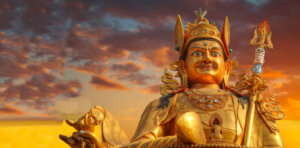
Padmasambhava: A Reader's Guide to Guru Rinpoche

Some Nyingma Lineages: Dudjom Tersar | Longchen Nyingtig | Namcho & Palyul
Guides to Other Important Nyingma Figures:
Rongzompa | Longchenpa | Jigme Lingpa | Patrul Rinpoche |
Sera Khandro | Mipham Rinpoche | Dilgo Khyentse | Dudjom Rinpoche
We begin this Reader’s Guide to Guru Rinpoche, also known as Padmasambhava, with some trepidation, as it is a delicate task to try and write a short article on a figure so central to the Tibetan Buddhist tradition and so revered by many, whose life and legacy are so rich. The attempt feels deficient, yet there are some great resources for practitioners that are important to highlight. Also, so many termas, or rediscovered treasures are in fact from Guru Rinpoche, that excluding them feels a bit odd but to include them would be overwhelming. In fact, there are few books in the Nyingma tradition where Guru Rinpoche is not a central figure.
This guide presumes readers already have a basic understanding of Guru Rinpoche, and how he is an historical figure and saint, considered a Buddha as well a focus of meditation in the form of the Guru, and the source of an incredible corpus of teachings.
Biographical Accounts
Hardcover | Ebook
$28.95 - Hardcover
Guru Rinpoche: His Life and Times
Introduced and translated by Ngawang Zangpo
The first half of the book includes six chapters where Ngawang Zangpo lays out an important framework for understanding Guru Rinpoche's impact and the mileiu he entered on his arrival to Tibet. These include:
- Buddhism, History, and the Truth
- Buddhist History after the Buddha
- Tibet and Asia on the Eve of Guru Rinpoché’s Arrival
- India in Guru Rinpoché’s Era
- Guru Rinpoché Now—in Print
- Timeless Guru Rinpoché and Wisdom Bridges to the Present
There are many account of Guru Rinpoche's life, and the second half of the book is collection of vitally important accounts about his life is an invaluable resource.
- A Biography of Guru Rinpoche by Jamgon Kongtrul
- The Immaculate White Lotus by Dorje Tso
- The Indian Version of the Life of Guru Rinpoche by Taranata
- The Bön Version of the Life of Guru Rinpoche by Jamyong Kyentse Wongpo
- Supplications to Guru Rinpoche in Seven Chapters by Guru Rinpoche
- Visualizations to Accompany the Supplications by Jamgon Kongtrul
Paperback | Ebook
$21.95 - Paperback
Crazy Wisdom
This fascinating book examines the life of Padmasambhava to illustrate the principle of "crazy wisdom". From this profound point of view, spiritual practice does not provide comfortable answers to pain or confusion. On the contrary, painful emotions can be appreciated as a challenging opportunity for new discovery. In particular, the author discusses meditation as a practical way to uncover one's own innate wisdom.
He uses the model of the Eight Names (or aspects of manifestations) of Guru Rinpoche, and goes through each in detail.
Trungpa Rinpoche makes a strong case that those in the west need Padmasabhava as badly as the savage and uncultured Tibetans of the eighth century.
Hardbound | Ebook
$21.95 - Hardcover
The Magical Life of the Lotus-Born
By Sherab Chodzin Kohn, illustrated by Thinley Dorji
Explore a fresh telling of the inspiring, mysterious, and magical life of the great master Padmasambhava—the Lotus-Born—who planted the seed of Buddhism in Tibet that is still blossoming today, beautifully illustrated for ages 10+.
Here, his magical life story is outlined in colorful and captivating detail, offering young readers a rare glimpse into his fierce adventures and battles that transformed Tibet, a land of malevolent spirits and wild folk, into a fertile ground for Buddhism. The rich and vibrant spiritual tradition that resulted in Tibet has thrived for over one thousand years. This timeless tale is sure to capture the imagination of future generations, just as the oral, theatrical, and written accounts of it have in the Himalayas for centuries.
The Seven Line Prayer
The Seven-Line prayer to Guru Rinpoche is one of the most ubiquitous and important prayers, performed across lineages and in particular the Nyingma tradition who commence nearly every practice with it and for which there are dedicated sadhanas based on it. Below are several of the books about it.
Visit our page dedicated to resources about the famed Seven Line Prayer
$18.95 - Paperback
Works and Practices Related to Padmasambhava
Hardcover | Ebook
$22.95 - Hardcover
A Garland of Views: A Guide to View, Meditation, and Result in the Nine Vehicles
by Padmasambhava and Mipham Rinpoche
A Garland of Views presents both a concise commentary by the eighth-century Indian Buddhist master Padmasambhava on a chapter from the Guhyagarbha Tantra on the different Buddhist and non-Buddhist philosophical views, including the Great Perfection (Dzogchen), and an explicative commentary on Padmasambhava’s text by the nineteenth-century scholar Jamgön Mipham (1846–1912).
Padmasambhava’s text is a core text of the Nyingma tradition because it provides the basis for the system of nine vehicles (three sutra vehicles and six tantra vehicles) that subsequently became the accepted way of classifying the different Buddhist paths in the Nyingma tradition.
Padmakara Translation Group translator Stephen Gethin on Garland of Views
Audiobook Sample
Audiobook (read by British actor Simon Callow)
$24.99 - Digital Audio
Paperback | Ebook
$21.95 - Paperback
A Practice of Padmasambhava: Essential Instructions on the Path to Awakening
A Practice of Padmasambhava presents two practical and compelling works related to a visualization and mantra practice of Padmasambhava. This practice is based on the most important revelation of the renowned nineteenth-century treasure revealer Chokgyur Lingpa, Accomplishing the Guru's Mind: Dispeller of All Obstacles. These two works give an introduction to the preliminary trainings, outline the primary elements of visualization practice and mantra recitation, and supply a detailed explanation of the practice of Padmasambhava's wisdom aspect, Guru Vadisimha. Through practical step-by-step instructions on this deity, the reader is guided into the general world of tantric practice common to all of Tibetan Buddhism.
Paperback | Ebook
$29.95 - Paperback
The Copper-Colored Mountain: Jigme Lingpa on Rebirth in Padmasambhava’s Pure Land
By Jigme Lingpa, George Halkias, and Christina Partsalaki
The Copper-Colored Mountain is the pure land of Padmasambhava, the Indian master who brought Buddhism to Tibet. One way in which Buddhist practitioners may be reborn in this pure land is by making aspiration prayers. This work includes a translation of one of the most famous of these aspiration prayers, composed by Jigme Lingpa, and the authors’ verse-by-verse analysis of it. Drawing on both traditional commentaries and contemporary scholarly texts, the authors show how Jigme Lingpa encodes many features of Tibetan Buddhist tantric practice in these verses, and thus they provide a feast of meaning for tantric practitioners.
Paperback | Ebook
$18.95 - Paperback
Secret Teachings of Padmasambhava: Essential Instructions on Mastering the Energies of Life
By Padmasambhava, translated by Kennard Lipman
Translations of several short but important texts on Innermost Essence of the Dakini (Khadro Nyingtig).
These two teachings of Padmasambhava, The Fivefold Essential Instruction and A Section of Hidden Instruction, the Innermost Essence of the Dakini, are certainly of interest to the serious practitioner of the Vajrayana. They not only present well-known tantric teachings of channels (tsa), energy (lung), and potencies (tigle) in a clear and practical way, but they also offer us a unique Dzogchen perspective on them. In addition, they give us a glimpse into life on retreat with two of the greatest masters of Tibetan Buddhism, Padmasambhava and Yeshe Tsogyal.
Paperback | Ebook
$16.95 - Paperback
The Tibetan Book of the Dead: The Great Liberation through Hearing in the Bardo
By Padmasambhava, Karma Lingpa. Translated and introduced by Chögyam Trungpa and Francesca Freemantle
Written by Guru Rinpoche, rediscovered as a terma by Karma Lingpa, and translated and introduced by Chögyam Trungpa and Francesca Freemantle, this work is traditionally read aloud to the dying to help them attain liberation—death and rebirth are seen as a process that provides an opportunity to recognize the true nature of mind. This translation of The Tibetan Book of the Dead emphasizes the practical advice that the book offers to the living. The insightful commentary by Chögyam Trungpa, written in clear, concise language, explains what the text teaches us about human psychology.
Paperback | Ebook
$24.95 - Paperback
Self-Liberation through Seeing with Naked Awareness
By Padmasambhava, Karma Lingpa, and John Myrdhin Reynolds
Teaching the attainment of Buddhahood in a single lifetime, this text was written and concealed by Guru Padmasambhava in the eighth century and rediscovered six centuries later by Karma Lingpa. The commentary by the translator is based on the oral teachings of Namkhai Norbu Rinpoche and Lama Tharchin Rinpoche.
Paperback | Ebook
$29.95 - Paperback
Gesar: Tantric Practices of the Tibetan Warrior King
By Mipham Rinpoche, Orgyen Tobgyal Rinpoche, Chogyam Trungpa. Introduced and translated by Gyurme Avertin
The King, protector, and deity Gesar of Ling is intimately connected with Guru Rinpoche. In his Garland of Jewels, Mipham Rinpoche explains that "The lords of the three families are Manjushri, Avalokiteshvara, and Vajrapani; their magical manifestation is Guru Rinpoche; and his emanation is Gesar Norbu Dradul. As Gesar prayers often specify, the 'emanation of Padma and the three families, Great Lion Gesar." This work explains the connection in several sections.
Orgyen Tobgyal relates:
Basically, the deity Gesar doesn’t exist; he is simply Guru Rinpoche in the form of a drala—a form he takes to help raise the windhorse of sentient beings. Guru Rinpoche is also the embodiment of the enlightened qualities of all the buddhas. His enlightened activities are unfathomable, but a small fraction took place in the Land of Ling, 'the awe-inspiring Ma valley' in Kham—this is what it’s called in all the stories written about Gesar.
Books on Some of Guru Rinpoche's Contemporaries
$34.95 - Paperback
By: Gyalwa Changchub & Namkhai Nyingpo & Padmakara Translation Group
The Life and Visions of Yeshe Tsogyal
$24.95 - Paperback
By: Chonyi Drolma & Dzongsar Jamyang Khyentse & Drime Kunga & Yeshe Tsogyal
We also encourage readers to explore the excellent series of books on Padmasambhava, Following in Your Footsteps, published by Rangjung Yeshe Publications.
Additional Resources


Except from A Brief Biography of Dilgo Khyetnse Rinpoche by Tulku Thondup
The following except by Tulku Thondup can be found in Volume 2 of The Collected Works of Dilgo Khyentse Rinpoche.
A B R I E F B I O G R A P H Y O F
DILGO K H Y ENTSE R I N POC H E
by Tulku Thondup
Kyabje Dilgo Khyentse Rinpoche Tashi Paljor (1910–1991) was one of the few great lineage holders, writers, teachers, and transmitters of teachings and powers of Nyingma tantras in general and Longchen Nyingthig in particular who reached numerous disciples in Tibet, India, Nepal, Bhutan, and the West.
He is also known as Gyurme Thekchok Tenpe Gyaltsen, Jigme Khyentse Özer, and Rabsel Dawa.
He was born on the thirtieth of the fourth month of the Iron Dog year of the fifteenth Rabjung (1910) in the family of Dilgo, a minister (nyerchen) of the king of Dege in the Nyö clan in Dan Valley. His father was Tashi Tsering. It was the very day that the great master Mipham Namgyal and his disciples were performing the feast ceremony at the completion of his one-and-a-half-month teaching on his Commentary on Kalachakra at Dilgo. Mipham immediately gave pills of Sarasvati, the female Buddha of wisdom, with the sacred letters dhih and hrih to the baby to eat even before tasting his mother’s milk. About a month after the birth, Mipham gave empowerments for purification and longevity and named him Tashi Paljor. Since then until Mipham died at the beginning of 1912, Khyentse was given blessed substances continuously.
When he was only four months old, Ngor Pönlop Loter Wangpo recognized him as the tulku of Khyentse Wangpo. At the time of the death of Mipham, Shechen Gyaltsap Pema Namgyal (1871–1926) saw him and asked the family to give him to Shechen.
At the age of six, he was accidentally burned badly in a fire and was seriously ill for about six months, which caused him to take ordination as a novice.
When he was fifteen, Gyaltsap recognized him as a tulku of Khyentse Wangpo, enthroned him at Shechen Monastery, and named him Gyurme Thekchok Tenpe Gyaltsen. He also gave him numerous transmissions, including those of the Dam-ngak Dzö and Nyingthig Yabzhi. From Khenpo Pema Losal of Dzogchen he received the transmission of Longchen Nyingthig. From Adzom Drukpa, he received teachings on Longchen Nyingthig Ngöndro.
With Khenpo Zhenphen Chökyi Nangwa (Zhen-ga) of Dzogchen, Khenpo Thupten Chöphel (Thupga) of Changma hermitage, Dza Mura Dechen Zangpo, and other masters, he studied the texts of Nagarjuna, Asanga, Abhidharma, Yo¨nten Dzo¨, the commentaries of Guhyagarbha-maya-jala-tantra, and many others. Khenpo Thupga recognized him as the tulku of Önpo Tenzin Norbu (Tenli).
Then from Khyentse Chökyi Lodrö he received the transmissions of Sakya, Kagyu, Geluk, and Nyingma teachings, including Rinchen Terdzö, Nyingthig Yahzhi, Longchen Nyingthig, and Lama Gongdu. From Khenpo Tendzin Dargye of Shechen he received the transmission of the nine volumes of Jigme Lingpa. From Shechen Kongtrul (1901–1959?) he received transmissions of the thirteen volumes of the Minling cycle. He received teachings of all the Buddhist traditions of Tibet from over seventy teachers. Among them, Shechen Gyaltsap and Khyentse Chö kyi Lodrö were his principal teachers.
Starting from the age of eighteen, for twelve years he stayed in solitary places and practiced various teachings, including the Three-Root Sadhanas of Minling Terchen and Longchen Nyingthig.
Throughout his life he dedicated himself to giving teachings and transmissions to all, whoever came to receive them. He wrote that by the age of sixty-four, he had given empowerments of Nyingthig Yabzhi and Longchen Nyingthig over ten times. From the age of forty till eighty-two he gave discourses on Chokchu Münsel, the commentary on Guhyagarbha by Longchen Rabjam, at least once a year, and gave extensive commentaries on Jigme Lingpa’s Yönten Dzö. Among countless other teachings, he gave five times the transmission of the Rinchen Terdzö, four times those of the Nyingma Kama, thrice that of the Dam-ngak Dzö, and twice that of the Kanjur.
Rinpoche and his consort, Khandro Lhamo, had two daughters. His daughter Chime’s son is the seventh Shechen Rabjam.
At the invitation of the royal family of Bhutan, he spent many years in Bhutan teaching and transmitting the teachings.
Since the early 1960s, he single-handedly maintained and propagated the unique nonsectarian tradition of Khyentses, and tirelessly with the continuity of a stream he spread the teachings by traveling, teaching, practicing, and building monuments without any pause, for the sake of Dharma and people.
In 1980 he built Shechen Tennyi Dargye Ling Monastery (a name he took from his monastery in Tibet) at Bodhnath in Nepal, an elaborate complex with over two hundred monk-students. In 1988 he established a shedra at the new monastery, where monks are studying scholarly texts. Starting in 1975, he visited many countries in the West many times and taught various levels of teachings and transmissions. Also he established Thekchok Ösal Chöling, a Dharma center in France. He visited Tibet three times from exile to teach and to help in rebuilding the monasteries and the faith in his homeland.
He conferred on the fourteenth Dalai Lama many empowerments and teachings on the commentaries of Guhyagarbha and Yönten Dzö and oral teachings of Dzogpa Chenpo combined with the teachings on Yeshe Lama.
He discovered many teachings and sadhanas as terma and wrote many scholarly texts and commentaries on various subjects, totaling twenty-three volumes. Among his writings on Longchen Nyingthig are a commentary on Palchen Düpa and Wangki Chokdrik.
At the age of eighty-one, at three a.m. on the twentieth of the eighth month of the Iron Sheep year (September 28, 1991), his enlightened mind merged into the ultimate openness at a hospital in Thimbu, the capital of Bhutan. Since then, his monastery in Nepal has been presided over by his Dharma heir and grandson, Rabjam Rinpoche, Gyurme Cho¨kyi Senge.
He was one of the greatest learned and accomplished masters of Tibet of our age. He was tall and giant. When he was among other masters, he stood like a mountain in the midst of hills or shone as the moon among stars, not because of his physical prominence, but because of the breadth of his scholarship and the depth of his saintliness. When he gave teachings, it was like the flow of a river, with hardly any pause. If strangers heard his lectures, their first impression might be that he was reading a beautiful text from memory, as the words of his talks were poetry, his grammar was perfect, and the meaning was profound.
Another most astonishing feature was his memory. He remembered not only scholarly and liturgical texts and details about his teachers and friends, but also those people whom he had seen only once years earlier. His kindness was boundless, and there was room for everybody.
Whenever I had an audience, he gave me the feeling that there was a place for me reserved in his vast mind. If you watched carefully, you got the feeling that he was always in the meditative or realized wisdom of openness and reaching out to people with the power of compassion, love, and directness, without any alteration.
He practically held the transmissions of all the Buddhist teachings of Tibet, but was constantly searching for additional transmissions, no matter how minor they might be. He had a huge library collection, but never stopped looking for even a page of a rare writing. He was also immensely loyal.
In his last trip from Bhutan to Kalimpong, instead of flying he insisted on making the arduous journey by car in order to see an old disciple of his on the way. While that effort might have exhausted the last drops of his physical strength, it would have been his joy and fulfillment, an act of compassion.
Urgyen Tenzin Jigme Lhundrup (b. 1993), the grandson of Tulku Ugyen Rinpoche (1919–1996) and the son of Kela Chokling Rinpoche and Dechen Paldron of Terdhe, has been enthroned as the reincarnation of Dilgo Khyentse Rinpoche.
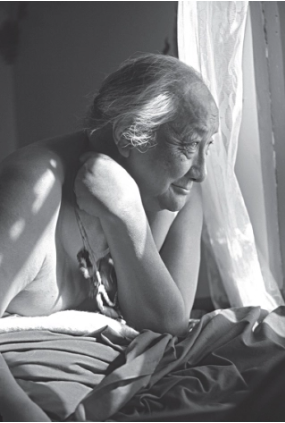

Books by Dilgo Khyentse Rinpoche
Discover more guides and articles from the Nyingma Tradition
The Complete Nyingma Tradition: A Resource Guide
Tulku Thondup: A Guide for Readers
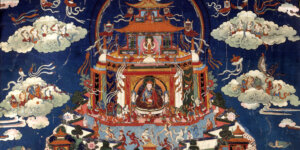
Praise for the Complete Nyingma Tradition

Explore the Complete Nyingma Tradition
Home Page of The Complete Nyingma Tradition
The Books of The Complete Nyingma Tradition
Choying Tobden Dorje and the Story Behind the Complete Nyingma TraditionIn Memorium: Alak Zenkar Rinpoche reflects on Lama Tharchin Rinpoche and the Complete Nyingma Tradition
Lama Sonam on The Complete Nyingma Tradition
> Praise for The Complete Nyingma Tradition

Translators include Gyurme Dorje, Ngawang Zangpo, and Heidi Nevin. Lama Tsering Gyaltsen has also been instrumental in various aspects of the project.
"This monumental treatise, covering both common and esoteric Buddhist lore, was composed by Choying Tobden Dorje, a most illustrious scholar and accomplished sage. Fortunately, among his voluminous books, this, his masterwork, has survived and has been carefully translated true to the original. It will open the eyes of serious readers to the vast spectrum of Buddhist wisdom."—Tulku Thondup Rinpoche
The Complete Nyingma Tradition from Sutra to Tantra, Books 1 to 10
$49.95 - Hardcover
"The Complete Nyingma Tradition from Sutra to Tantra represents a rare opportunity for readers to obtain a complete map of the Buddha's teachings. It contains very detailed descriptions of the profound and vast teachings of the ground, path, and fruition of both the sutra and tantra traditions. It provides particular emphasis on detailed instructions of the inner tantras of mahayoga, anuyoga, and the precious dzokchen tradition. I highly recommend this book for students who wish to gain a deeper understanding of the complete path to enlightenment."—Orgyen Chowang Rinpoche
The Complete Nyingma Tradition from Sutra to Tantra, Book 13
$39.95 - Hardcover
"The translation of this text is a major milestone in bringing Tibetan Buddhist wisdom to the West. One of the legacies of ancient Tibet is the preservation of vast numbers of the Buddhist scriptures in their most complete and authentic forms. This text is a remarkable example of that. It has the power to reveal the rich traditions of Tibetan Buddhism from its surface to its depth, and it will illuminate the minds of those who have the great good fortune to meet with it."—Anam Thubten
The Complete Nyingma Tradition from Sutra to Tantra, Book 14
$39.95 - Hardcover
We hope you're enjoyed exploring The Complete Nyingma Tradition with our online resource guide. For more information on the current and upcoming publications in this series please refer to the earlier pages of our resource guide including the Home Page of The Complete Nyingma Tradition and The Books of The Complete Nyingma Tradition.
You many also enjoy the following reader guides:
The Complete Nyingma Tradition from Sutra to Tantra, Books 15 to 17
$59.00 - Hardcover
SNOW LION NEWSLETTER ARCHIVE
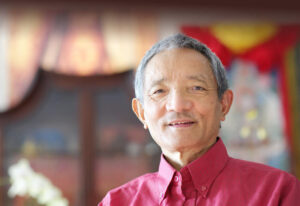
| The following article is from the Winter, 1996 issue of the Snow Lion Newsletter and is for historical reference only. You can see this in context of the original newsletter here. |
by Longchen Rapjampa Introduced, trans, and annotated by Tulku Thondup Rinpoche Ed. by Harold Talbott
482 pp. ISBN 1-55939-054-9 $22.95
The following is excerpted from the translator's preface to The Practice of Dzogchen.
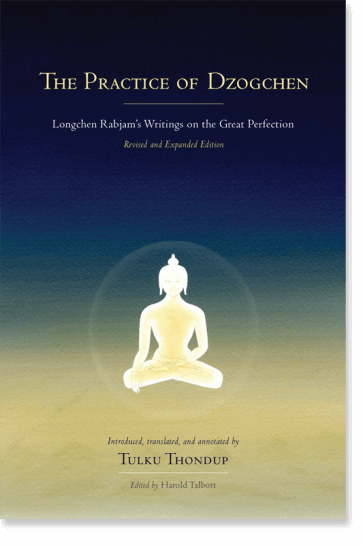
Dzogpa Chenpo meditation is the method of training of utmost simplicity in order to reach the most simple state free from conceptual elaborations. But for ordinary people like us, to attain the state of utmost simplicity and ease is the hardest goal to accomplish. Thus, to prepare for the Dzogpa Chenpo training, one has to do various preliminary studies and train ing in order to learn the path and purify the stains of negative emotions with their traces; to generate positive energy through the force of virtues; and to realize, refine and perfect the ordinary meditative attainments taught in the common Buddhist paths. When one is ready, in accordance with the strength of one's spiritual experiences, one should be instructed in the Dzogpa Chenpo meditation by a qualified master.
For the happiness and enlightenment of beings, Buddhism works with the root, the root of gaining joy and dispelling misery, which lies in individuals; for society is a collection of individuals. For an individual, the mind is the main factor and the forerunner of all activities. So the improvement and perfection of the mental state is the primary emphasis of Buddhist training. If one has improved and perfected one's mind, all one's physical activities will be naturally perfect and one's presence and activities will become a source of true happiness and enlightenment for others. From the moment of becoming a Mahayana Buddhist, one is expected to exert oneself in the service of others. The whole aspiration in spiritual training is for the sake of others. But at the beginning, the emphasis will be on the spiritual progress of oneself, deriving from one's own mind. Without spiritual strength within oneself, trying to serve others will be as a Tibetan proverb says: A falling person cannot give his shoulder to another falling person to rely on.

Without spiritual strength within oneself, trying to serve others will be as a Tibetan proverb says: A falling person cannot give his shoulder to another falling person to rely on.
The meditations of tantra and of Dzogpa Chenpo taught and transmitted by Guru Padmasambhava are a training on the balanced path of the view of primordial wisdom and the activities of meritorious applications. They are neither a contemplation on mere view, although some interpret them thus, nor training on just meritorious activities. Guru Padmasambhava said to King Thrisong Deutsen (790-858):
Please do not lose the view in favor of activities. If you do, being tied to existential characteristics, you will not attain liberation. Please do not lose activities in favor of the view. If you do, there arises (a situation of) absence of both virtues and vices (and one falls into the extreme of) nihilism, and (one's spiritual life) becomes irreparable. 0 great king, as my tantras possess extensive (teach ings on) view, in the future many people who know the words [textual expression] of the view but lack the confidence of the view in their mental continuum could stray into inferior realms
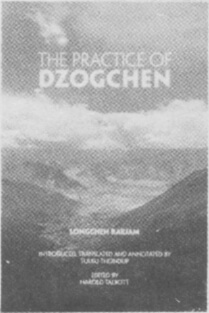
The cover of an earlier edition and what is in the newsletter
In Dzogpa Chenpo meditation itself there are numerous stages of training which must be taught and practiced step by step. Each step is taken only when the trainee is ready for it. In Dzogpa Chenpo, a subtle and esoteric meditation which transcends intellectual and mental fabrications, one doesn't study or read the teachings on a particular aspect until one is ready for that particular step of experience and for training on it. And one is definitely excluded from instructions on experiential meditation (Nyams-Khrid or dMar-Khrid). If, without being ready for the particular meditative experiences, one reads about or studies them, one could just build up fabricated images of intellectual understanding about a particular meditative experience. Thereby, before having any true experience or pure realization, one could fall into the pit of mental creations. Then the trainee will find it hard even to distinguish whether it is a true experience of realization or a mentally created image. This way of introduction applies not only to Dzogpa Chenpo, but also to general tantric training. In sutric teaching, first you study and then enter into the training. But in the tantras, when you have matured through the common preparatory virtues and are ready for the esoteric training, you will receive the transmission of the realization through an Empowerment (dBang, S.abhisekha) ceremony. Only then will you be introduced to the course of study and training in the tantra by using the Primordial Wisdom, the meaning of the empowerment (dBang-Don Gyi Ye-Shes), which is realized during the transmission of empowerment, as the means and the basis of meditation. Some people do not need to undergo any common training but are ready for higher training such as Dzogpa Chenpo. But such people are a bare possibility in this world of ours.
Therefore, in this book I have tried to avoid including any instructions on the stages of experiential meditation, since one should get them individually from a true master in person, stage by stage, according to one's own experiential abilities. I have tried to present here only, or at least mainly, the teachings on view, the outline of the meditation, and the result of Dzogpa Chenpo.
Nowadays, as the cultural context of the traditional teachings is changing, the tantric teachings and even the Dzogpa Chenpo teachings are being given in public to many people who may have little belief, who have done no preliminary train ing or have received no introductory empowerments. The main focus of attraction and the goal of many so-called masters and disciples unfortunately have become worldly or sensual attributes. On the other hand, there are many serious Dharma people who wish to study Dzogpa Chenpo teachings out of pure Dharma interest, and who are prepared for such teachings through preliminary study and training. But the lack of instruction and reading material in Western languages is preventing them from making much progress on this path. In this situation, it is a serious decision whether or not to write and translate such teachings and make them public. Realistically, in this modern age, there is no way that these teachings could be preserved and practiced traditionally only by those who are ready for them. So the alternative is to consider what will be the best possible way to present the teachings to the public so that they will be of most benefit to the people whom they will reach.
After all these considerations, I reached the conclusion that I would attempt to translate and present these original scriptures, the very words which came from the wisdom of the Enlightened Ones, unstained by the contemporary intellectual thought of this modernistic world or ours. ä_æ
Tulku Thondup Rinpoche
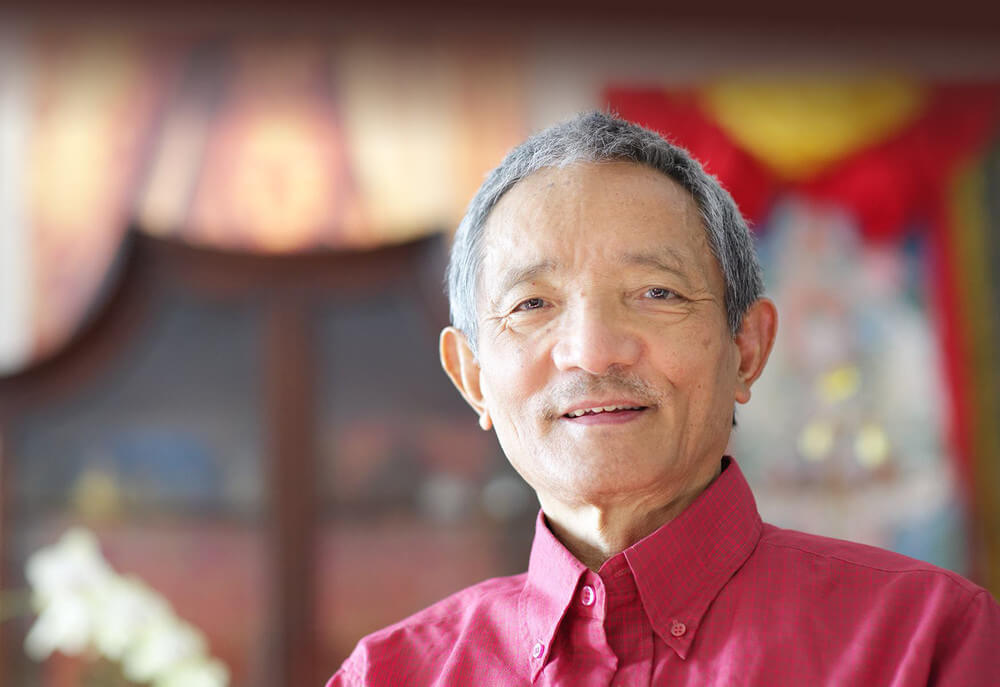
Books by Longchenpa

Profile: Tulku Thondup Rinpoche
| The following article is from the Winter, 1986 issue of the Snow Lion Newsletter and is for historical reference only. You can see this in context of the original newsletter here. |
The Venerable Tulku Thondup Rinpoche was born in 1939 in Golok, Eastern Tibet. At the age of four he was recognized as the Tulku of Konme Khenpo, an outstanding scholar of Dodrup Chen Monastery. He studied at Dodrup Chen under Khenpo Chechog and many other great scholars and masters of meditation. In 1957 he left Golok with His Holiness Dodrup Chen Rinpoche and went to Sikkim.
From 1967 to 1976 Tulku Thondup taught at Lucknow University and he was a Lecturer at Visva-Bharati University in Santiniketan, West Bengal from 1976-1980. From 1980 to 1983 he was a Visiting Scholar at the Center for the Study of World Religions at Harvard University.
Since 1975 Tulku Thondup has been the Presiding Officer of Buddhayana, a church and educational foundation based in New York City with an office in Marion, Massachusetts.
The Buddhayana has three main purposes: 1) to assist in the editing and publication of Tulku Thondup's writings and translations of Buddhist texts of the Nyingma Tradition of Tibet, 2) to raise funds for the Chorten Monastery of His Holiness Dodrup Chen Rinpoche in Gangtok, Sikkim, India, 3) to raise funds for the rebuilding of the Temple of the Maha Siddha Nyingmapa Center, Hawley, Massachusetts (the original temple was burned down three years ago).
In addition to his writing and translation work under the auspices of Buddhayana, Tulku Thondup helps with the spiritual training of Dodrup Chen Rinpoche's student group, the Maha Siddha Nyingmapa Center. Rinpoche divides his time between the United States, India and Bhutan. Tulku Thondup leads the students at Hawley in ceremonies and retreats and gives them training and counsel.
At present Tulku Thondup lives in Cambridge, Massachusetts. He is the author of Hidden Teachings of Tibet, an Explanation of the Terma Tradition of the Nyingma School of Buddhism, to be published this fall. It will be published by Wisdom and distributed in the United States by Snow Lion Publications.
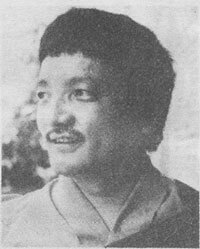
Tulku Thondup

